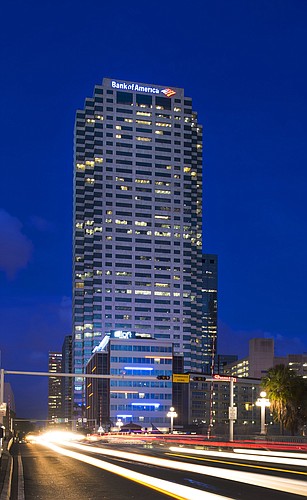- April 7, 2025
-
-
Loading

Loading

Commercial real estate brokerage firm Cushman & Wakefield contends that while the Tampa area has seen a surge of population growth and employment over the past six years, significantly more growth could be on the horizon. It considers Tampa to be among seven “Late Bloomers” — together with Las Vegas, Jacksonville, Memphis, Oakland, Sacramento and Philadelphia — where employment could extend the current growth cycle for years to come. In all, the company studied 35 metro areas nationwide where employment gains have outpaced the rest of the U.S. this economic cycle.
On employment gains nationwide: “U.S. nonfarm payrolls have increased every month since September 2010. Subsequently, the U.S. has added jobs for 103 consecutive months — 8.5 years — the longest sustained period of job growth in the post WWII period.”
On Tampa’s place as a “Late Bloomer” and its job gains since 2014: “Growth in the last four years has far outperformed that in the first five years of the expansion. On average, the acceleration has been about 140 basis points (bps) per year.”
On Late Bloomers’ reduction in unemployment: “Most had an unemployment rate above the national average in the first half of the expansion, suggesting that they were more severely impacted by the recession. As their economies mended, job growth accelerated.”
On future employment growth among Late Bloomers: “Because they started off more slowly, there may be more room for them to grow than other metros.”
11.7
Asking office rent rate gains in Tampa in the decade comprising 2009 through 2018. Among “Late Bloomers,” Tampa ranked third in its office rent rate growth, behind only Oakland at 48.5% and Philadelphia, at 15.2%.
5,895,441
Amount of absorption, in square feet, through leasing activity in Tampa between 2010 and 2018. Among “Late Bloomers,” Tampa ranked second in this category, behind only Oakland, which had total absorption of 9.01 million square feet of space.
4.5
Amount of average office property value gain, on a percentage basis, in Tampa between 2009 and 2018. Among “Late Bloomers,” Tampa came in third again in this category, behind Philadelphia, at 9%, and Jacksonville, where property values climbed 5.4% during the period studied.
48
Percentage of all U.S. employment that is found in the 35 metropolitan areas that Cushman & Wakefield studied, ranging from New York to San Francisco and Seattle to Miami.
48
Previous record for number of months of consecutive U.S. job growth prior to the current economic expansion and job growth of 103 consecutive months. The previous record was set in the 1980s.
21.2
Median increase, as a percentage, of employment growth occurring in the 35 metro areas studied. The average growth rate, from 2009 through 2018, was 18.5%.
13.5
Average employment growth rate in the entire U.S., as a percentage, from 2009 through 2018.
38.1
Employment growth increase in Austin, Texas, on a percentage basis, for the nine years between 2009 and 2018, the largest increase of any U.S. city with a population of one million or more.
36,668,853
Total absorption in New York City between 2009 and 2018, the most of any U.S. city during that period. New York and Austin, along with Dallas, San Francisco, Riverside/San Bernadino and Orlando, are considered “All Stars” because of their job growth over the course of the decade.
92.6
Percentage of growth in asking office rents in San Francisco between 2009 and 2018, the biggest gain of any of the 35 metro areas studied.
26.6
Percentage of growth in asking office rents in Miami between 2009 and 2018. The city was in the middle of rent rate gains among 11 cities dubbed “Overachievers,” a list that included Nashville, Denver, Atlanta, Charlotte, Seattle and Los Angeles. San Jose had the highest rental rate growth among so-called “Overachievers,” at 46%.
11
Percentage of property value growth in Chicago between 2010 and 2018, the highest among 11 cities described as “Middle of the Road” performers, a list that also included Boston, Portland, Washington, D.C., and Minneapolis.
Source: Cushman & Wakefield, U.S. Bureau of Labor Statistics